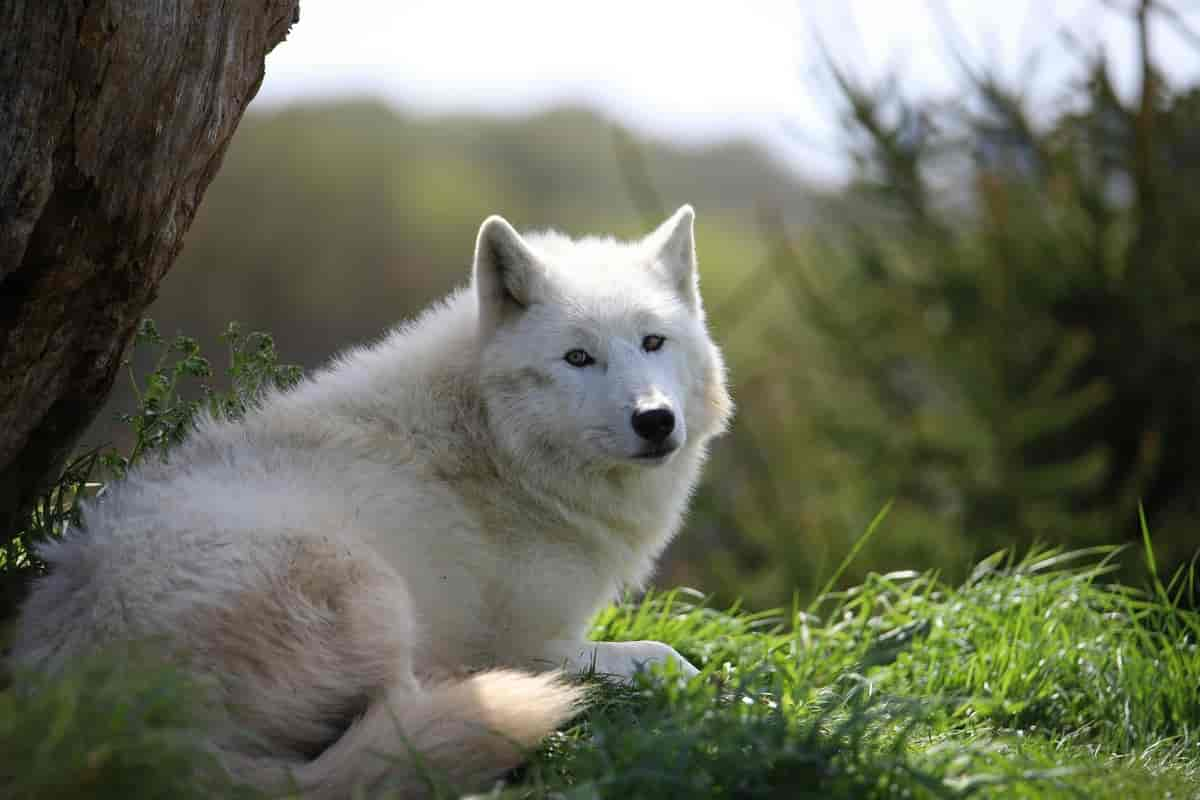Arctic Wolf - Learn their Diet, Habitats, Fascinating Facts, and More

What is an Arctic Wolf?
The Arctic Wolf is a carnivore hunter often called the “polar wolf” or “white wolf.” This white beauty is a wolf subspecies, native to the Arctic regions of North America, Canada, and Greenland. Arctic wolf is smaller in size than gray wolf, but have similar hunting behaviors. These wild animals hunt in packs, follow the lead of an alpha white wolf, and use howling as a way of communication. They are extremely protective of their pack pups and frequently take turns to protect and feed them.
The Arctic wolf is easily able to live at -30 °C and zero sunlight for months. It is capable of surviving in harsh and extremely cold weather. These wolves play a vital role in the ecosystem of wildlife by controlling the population of caribou, musk oxen, and Arctic hares in their regions. Because they live in harsh weather conditions, Arctic wolves are not hunted or displaced. As a result, they are not on the list of threatened or endangered wild animals. However, due to the effects of climate change and the industrialization of the Arctic region, their population and habitat might face severe challenges soon. Their current total estimated world population is 200,000.
Profile
Zoological Name | Canis lupus arctos |
Family | Canidae |
Areas | Arctic regions of Greenland, Canada, and North America |
Category | Carnivore |
Length | 3.2 to 5.9 feet |
Age | 7 – 17 years |
Build | Short legs, small ears, and dense fur |
Ability | Excellent huntersand, keep sense of smell, and well adapted to extreme cold weather |
(Profile of Arctic Wolf)
Physical appearance, size, coloration, and unique features
They are born grey or brown, and after a year, they change color and turn white. Their size is the same as that of a brown wolf. What makes them unique is the thick white coat, which helps them with camouflage and insulation. They have smaller ears than other kinds of wild wolves, which minimizes heat loss. They also have a keen sense of smell to locate prey in extreme weather conditions, which makes them capable of adapting to survive in icy environments.
Habitat and distribution
They live in caves and not in dens like other wolf breeds. Their habitat areas have no human population nearby. Their territory size depends on the amount of food available. They spend up to 5 months every year in complete 24-hour darkness. They are mostly found in tundra, taiga, and coastal areas, of the Arctic region, surviving in some of the harshest climates on planet Earth.
What does an Arctic wolf eat?
The Arctic wolf is an omnivore animal, and it gets more than 70% of its nutritional needs from the hunting prey it eats. Their primary food source consists of muskoxen, Arctic hare, caribou, snowshoe hare, moose, deer, elk, beetles, Arctic fox, birds, and ground squirrel. Arctic wolves can also easily take down much larger prey, such as musk oxen and Arctic hares. They eat a variety of foods and can scavenge on remains left behind by larger predators. These wild species can even fulfill their water needs during the extreme winter season when everything is frozen from their prey. They are capable of surviving weeks without food during the winter. They are famous for being excellent hunters of wildlife, and they always hunt in packs with strategies and share the food.
Reproduction and life cycle
Only the top alpha and beta males and females are allowed to mate and reproduce. They do this to ensure that the scarce food resources will not spread in a way that will result in the deaths of many of the pups. Arctic wolves give birth to 5 to 7 pups at a time, and the gestation period of a female wolf is from 53 to 65 days. They give birth in a cave and a den on the grounds or in the snow.
What does the Arctic wolf look like?
The Arctic wolf is considered one of the most beautiful animals in the Arctic region. This wild wolf has a thick white fur coat that helps it easily adjust to extreme cold conditions. In height and weight, arctic wolves are slightly smaller than other wolf species. They also have smaller ears, smaller legs, and a shorter muzzle compared to other wolf species.
How big is an Arctic wolve?
The Arctic wolf’s average weight is between 30 and 72 kg, and its height is between 3.2 and 5.9 feet. The Arctic wolf is smaller than a grey wolf. They have small ears and short legs as compared to grey wolves.
Arctic wolf Location
They live in one of the most remote locations in the Arctic regions (North America, Canada, and Greenland). They rarely encounter humans and roam freely in their habitat.
How do Arctic wolves survive in extreme cold?
Arctic wolves have several anatomical, behavioral, and physiological adaptations that allow them to survive in extremely cold environments easily.
- Small ears: They have small ears, which helps them lose less heat.
- Thick white fur: They also have thick fur for camouflage season, and it gets thicker when the cold weather starts to arrive.
- Fur on the paws: this helps them have a good grip on slippery surfaces.
- Body fat: they have a thick layer of body fat that helps them survive, especially when the food supply is short.
- Heat exchange in the paws: just like domestic dogs, and birds like ducks and penguins, arctic wolves have a concurrent heat exchange system in their paws.
Are Arctic wolves endangered?
No, they are not. In fact, they are listed on the IUCN Red List of endangered species as having the least concern. Due to their extreme cold and remote habitat, they do not face threats from humans like grey wolves. However, due to climate change, their population might be threatened in a few years.
Are Arctic wolves dangerous to humans?
The short answer is, yes, they are! Just like humans, they are capable of attacking animals larger than their size. They are unafraid of humans and large animals, except polar bears. Arctic wolves are ferocious beasts of wildlife and can easily attack humans when approached. But unlike other wolves, they rarely come in contact with humans due to their remote locations.
Do Arctic wolves live in packs?
Arctic wolves are social animals, and they live in packs. In their pack, each arctic wolf has a position in the dominance hierarchy. Packs are usually comprised of 7 to 8 wolves.
How long do Arctic wolves live?
In the wild, they live for around 7 to 10 years. In captivity, the age can go up to 17 years.
Can Arctic wolves interbreed with other wolf species?
Arctic wolves typically do not interbreed with other wolf species in the wild. But they are capable of interbreeding with canis lupus, like gray wolves and timber wolves.
Do Arctic wolves migrate?
Arctic wolves live in remote areas, and they do not migrate like other species of wolves. They travel long distances to search for food, but they do not have a seasonal migration pattern like other wild animals.
How do Arctic wolves communicate?
They communicate with each other by howling, barking, whining, squealing, and using body language, as well as facial expressions. They also do scent marking by rubbing their bodies or leaving urine and faces on rocks and trees to establish territory and communicate with other wolves. They usually howl before the hunt, just for fun or social interactions.
How do Arctic wolves hunt?
The Arctic wolf has the incredible gift of a sense of smell and hearing abilities. These abilities help the wolf find its prey. Arctic wolves do not hunt alone but in packs. Together, they chase and test their target, and then kill by utilizing as much litter energy as possible, which increases the chances of injury.
Can Arctic wolves be kept as pets?
No, an Arctic wolf shouldn’t be kept as a pet. It requires specialized care, which is quite expensive and time-consuming. Also, due to their instincts, they are not suitable to keep as pets.

